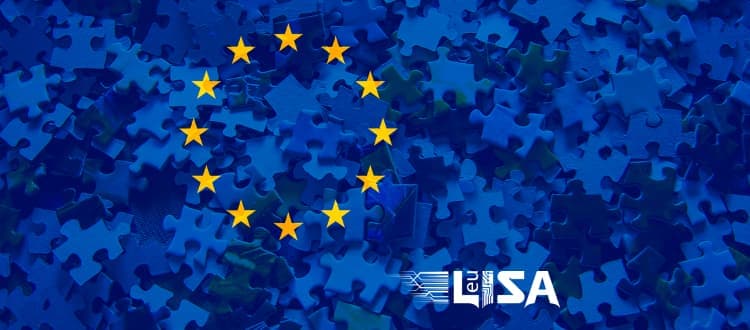EU Interoperability, a WCC perspective
EU Member States face many border control and security challenges. In the first place, mass (illegal) immigration, criminal activities, and terrorism. More recently, tracking the spread of COVID-19. At the same time, EU Interoperability is limited. And this leads to information silos within central EU systems. As a result, there are information gaps. Criminal organizations exploit these gaps, and suspects can fall through the cracks.
The EU therefore wants to remove these silos and improve the exchange of information. With this in mind, it introduced new interoperability regulations in 2019. These changes will assist law enforcement, reduce the risk of misidentification, and also protect the rights of citizens. But it needs industry partnerships to achieve these goals.
As pioneers in the new Universal Message Format (UMF) standards, and with expertise in biographic identity matching, WCC has a role to play in the solution. For this reason, eu-LISA invited WCC to make a presentation showing how using UMF will improve EU Interoperability.

New EU interoperability regulations
The EU first established a roadmap towards EU interoperability in 2016. Moreover, studies in 2017 concluded that it was necessary and technically feasible to achieve their goals. In other words, the EU believes it can make operational gains while at the same time, comply with data protection standards. As a result, in May 2017, the EU Commission announced its intention to strengthen the security union. Most importantly, to eliminate information gaps and share information between systems.
Subsequently, on the 22nd of May 2019, the EU published two new regulations.
- Regulation (EU) 2019/817: establishing a framework for EU interoperability between information systems in the field of borders and visa information systems;
- Regulation (EU) 2019/818: establishing a framework for EU interoperability between information systems in the field of police and judicial cooperation, asylum, and migration.
EU Interoperability objectives
In “Closing the information gap,” the EU Security Union concluded:
The current EU information systems for security, border, and migration management do not work together – they are fragmented, complex, and difficult to operate. As a result, information may slip through the net, endangering the EU’s internal security and the safety of European citizens.
The need to improve EU interoperability is clear. Existing systems such as VIS, EURODAC, and SIS / SIS II must be able to share data. New IT-systems such as EES, ETIAS, and ECRIS-TCN also need to follow these guidelines. Above all, without adding new databases or changing access rights to existing systems.
Components needed as part of the move towards EU interoperability include:
- European Search Portal (ESP) – fast, seamless, simultaneous searches in EU information systems, including Europol data and Interpol databases;
- Shared Biometric Matching Service (sBMS) – search and compare biometric data (fingerprints and facial images), linking this data to other systems;
- Common Identity Repository (CIR) – shared biographical and biometric data, to increase the accuracy of identification through automated comparison and matching;
- Multiple Identity Detector (MID) – automatic detection of multiple identities linked to the same set of biometric data.
Addressing the challenges
The 11th eu-LISA Industry Roundtable took place in Tallinn in October 2019, discussing solutions that could improve EU interoperability. Clause 51 of the new regulations clearly states that:
The Universal Message Format (UMF) should serve as a standard for structured, cross-border information exchange between information systems, authorities or organizations in the field of Justice and Home Affairs (JHA).
The regulations go on to state that “UMF may be considered in VIS, SIS, and in any other existing or new cross-border information exchanges.” WCC already uses UMF-compliant data in many of their solutions.
At the Tallinn conference, the WCC ID Solutions Manager, Mr. Amr el Rahwan gave a presentation describing how Interoperability can be achieved using UMF. As an example, he referred to POLE (Person, Object, Location, and Event). At the same time, he identified several challenges to the introduction of search and match within the EU:
- Multiple systems need to be queried separately;
- Databases process personal and sensitive data, so users have restricted access;
- Databases and interfaces are developed by different vendors, leading to compatibility issues;
- Different types of data need to be integrated: biometric, biographic data.
WCC’s proposal met each of these challenges and is, therefore, a very promising option.
UMF, a solution for EU Interoperability
It’s important to realize that organizations can meet many of the EU requirements by reusing existing technology in VIS. An EU system that uses technology developed by WCC. Read the second part of our blog to learn how UMF can provide a solution for EU Interoperability.
The eu-LISA report concludes that more interoperability at the Member State level is essential to the success of an EU-level solution. Yet many individual Member States are unaware that they need to improve their internal information systems to exchange data efficiently. WCC’s know-how means that we can help Member State organizations to achieve this goal. If you want to learn more about the out-of-the-box solutions available from WCC, please get in touch.
WCC - Software that Matters
Our team is ready to answer your questions.